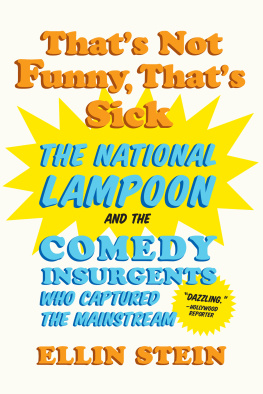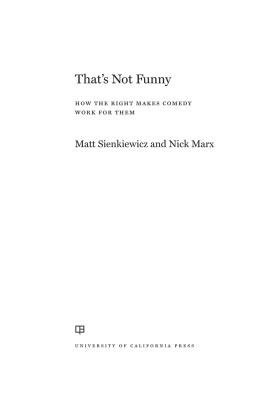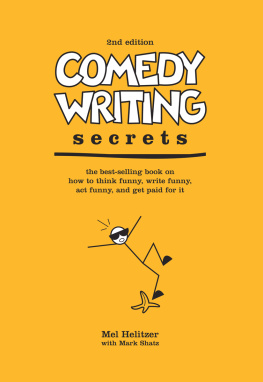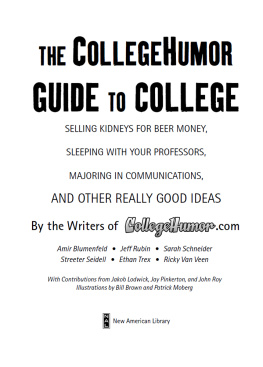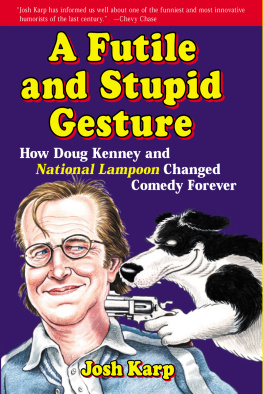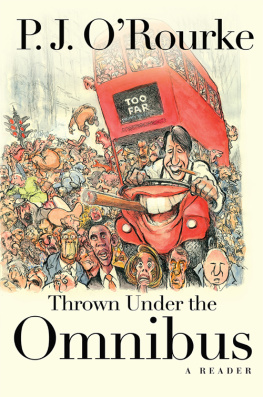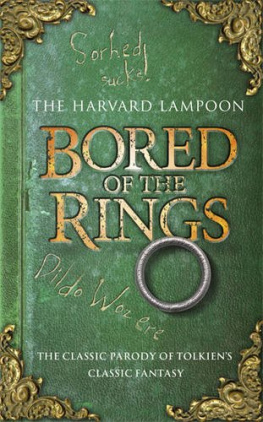
THATS NOT
FUNNY,
THATS SICK
The National Lampoon and the Comedy
Insurgents Who Captured the Mainstream
Ellin Stein

W. W. NORTON & COMPANY
NEW YORK LONDON
THATS NOT FUNNY, THATS SICK
You cant pick your offsprings personality, and the way a personality develops on its own, involuntarily, through an array of influences of varying importance and salience, echoes the way the Lampoon personality emerges in the pages of Steins bookthrough a pastiche of eyewitness recollections, some of them contradictory, many of them fascinating, and all accompanied by the authors breezy running commentary on the cultural storms that swirled in the background.
Nathaniel Stein, Daily Beast
Its not much of a stretch to call this... a bible on the subject. Ellin Stein goes deep and dirty on the topic.... [A] book that will serve as a cultural reference work for the ages. And a blast from the past to read.
Michael Heaton, Weekly Standard
If you ever picked up an issue of the National Lampoon , or misspent your youth in the sixties and seventies; if you ever wondered about the origins of Saturday Night Live or, in fact, ever had any interest in the course of American humor from the late sixties onward, this is a book to read.... Ellin Stein does a masterful job of connecting the dots and filling in the color of an important page in a complicated era.... Thats Not Funny takes you on a ride through what was, arguably, the heyday of American humor.
Ellary Eddy, Realize Magazine
There have been more than a few books written about National Lampoon and the people who worked there, but none of them puts the history of the magazine and its spin-offs in context the way Ellin Steins Thats Not Funny, Thats Sick does.... [F]or anyone who is interested in the big picture of National Lampoon s history and cultural influence, Ellin Steins Thats Not Funny, Thats Sick is the one to get.
Mark Simonson, Marks Very Large National Lampoon Site
A brilliantly detailed account of the formation, rise and fall of the Lampoon as a magazine, focusing on the period from the mid-60s to the late 70s.
Nick Zaino, Spit Take
Stein understands not only the value of engaging reportage, but the importance of story. Setting the stage socially and historically, she... follows the Lampoons many tributaries and side projects without getting too bogged down explicating jokes.
Matthew Love, Time Out New York
[Stein] works hard, tracking down dozens of Lampoon vets for interviews, laying out every side of petty squabbles and complicated finances, not flinching from character flaws and the darker sides of some of the comedy and the comedians.... A worthy addition to the comedy library.
Michael Precker, Dallas Morning News
A terrific narrative.
William McKeen, Creative Loafing (Tampa)
Decidedly and excitingly thorough.
J.C. Maek III, PopMatters
Brimming with insider stories and set against the roiling political and cultural landscape of the 1970s, Thats Not Funny, Thats Sick goes behind the jokes to witness the fights, the parties, the collaborationsand the competitionamong this fraternity of the self-consciously disenchanted.
Inkspill
[A] genius of a book.
Kentucky Democrat
Copyright 2013 by Ellin Stein
All rights reserved
First published as a Norton paperback 2015
For information about permission to reproduce selections from this book, write to Permissions, W. W. Norton & Company, Inc., 500 Fifth Avenue, New York, NY 10110
For information about special discounts for bulk purchases, please contact W. W. Norton Special Sales at specialsales@wwnorton.com or 800-233-4830
Book design by Daniel Lagin
Production manager: Devon Zahn
The Library of Congress has cataloged the printed edition as follows:
Stein, Ellin.
Thats not funny, thats sick : the National lampoon and the comedy insurgents who captured the mainstream / Ellin Stein. First edition.
pages cm
Includes bibliographical references and index.
ISBN 978-0-393-07409-3 (hardcover)
1. National lampoonHistory. 2. American wit and humorPeriodicalsHistory. I. Title.
PN4900.N324S74 2013
051dc23
2013006174
ISBN 978-0-393-08437-5 (e-book)
ISBN 978-0-393-35024-1 pbk.
W. W. Norton & Company, Inc.
500 Fifth Avenue, New York, N.Y. 10110
www.wwnorton.com
W. W. Norton & Company Ltd.
Castle House, 75/76 Wells Street, London W1T 3QT
To Enid, who isnt here to read this, and to Chris, who is
CONTENTS
I mmediately after the last Labor Day of the 1960s, two recent Harvard graduates moved to New York to work on a magazine called the National Lampoon . Unlike many recent graduates who start work on new magazines, Henry Beard and Doug Kenney came in as the chief editors. Unlike many magazines that have recent graduates as chief editors, the Lampoon had backers committed to the tune of $350,000 (about $2 million in todays money), a deal negotiated by a Harvard student who was still finishing up his last term. Six years later, the two editors would each be $2.5 million (nearly $11 million today) richer. Five years after that, one would have found a measure of equilibrium by keeping a low profile while the other, having blazed a comet-like trail of highly visible successes, would tumble to his death off a cliff in Hawaii.
Along the way, the National Lampoon helped trigger a chain reaction of groundbreaking projects that would spread to theater, records, radio, television, and movies, making satire and subversive humor a gateway to commercial success when the conventional wisdom had previously considered it to be an obstacle. It was a pebble thrown into a pond, with ripples ultimately including The Simpsons , The Onion, This Is Spinal Tap, South Park, The Daily Show, 30 Rock , and Superbad , but its most significant and proximate influence was on Saturday Night Live , the breakthrough television show that for over thirty-five years has been the premiere launching pad for American comedy talent. Satirists and humorists emerged in amazing numbers to bounce off each other in ever-shifting groups and combinations, generating considerable heat, occasional light, and more than a few dramatic explosions. The Lampoon and its offspring reflected, defined, and enhanced an iconoclastic sensibility that would emerge as the dominant style of the 70s, a decade that otherwise often seemed like the hangover after the blowout of the 60s.
Huge pop culture successes are big rivers fed by many obscure streams. The tributaries feeding into the mighty Lampoon included improvisational comedy troupes such as Second City, early video production collectives like TVTV, underground comics, and, primarily, the Harvard Lampoon ( HL ), humor organ of the august university and, at the time, as unlikely a source for future television comedy writers as could be imagined. But in time, membership of the HL would change from being an excuse to hang out to being a coveted launch pad into the entertainment industry, all due to the unexpected success of Beard and Kenneys efforts.
Much as the HL s frivolity departs from Harvards overall serious -mindedness, so its home resembles an elaborate and charming joke, an unusually whimsical exception to the order and harmony of the universitys architectural vernacular. Although called the Castle, the building is only three stories. However, it does have a tower with a pointed roof, atop which perches the Ibis, the organizations frequently stolen mascot. Vaguely medieval detailing such as emblazoned wooden doors and leaded glass windows add a certain baronial flair. Upstairs is the Great Hall, a big room that looks like a Hollywood version of something called The Great Hall down to its vaulted ceiling and magnificent sixteenth -century Elizabethan fireplace, suitable for smashing plates and glassware against (the building comes complete with a maintenance staff to clean it up). The walls along a winding staircase are covered with framed covers of HL projects dating back to the founding of the organization/publication by seven undergraduates in 1876.
Next page
